Interlocking Keychains // Pookatdinocrafts



Interlocking Keychains // Pookatdinocrafts
More Posts from Learned-something-new-today and Others
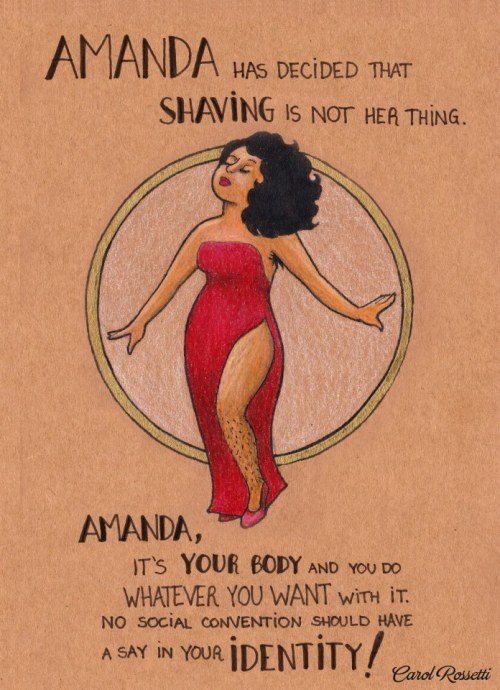
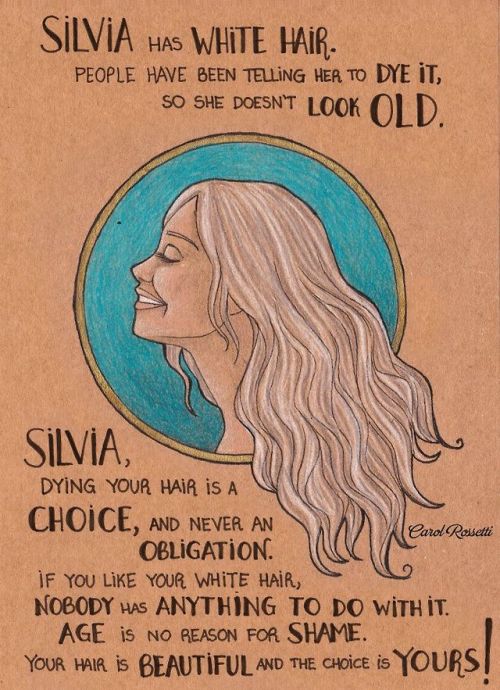
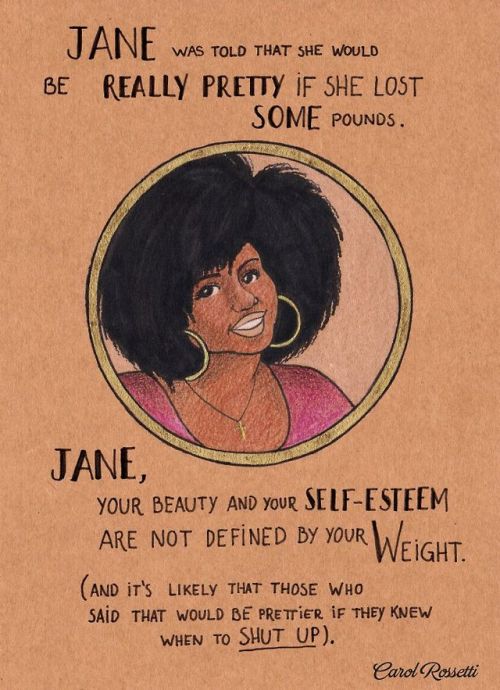
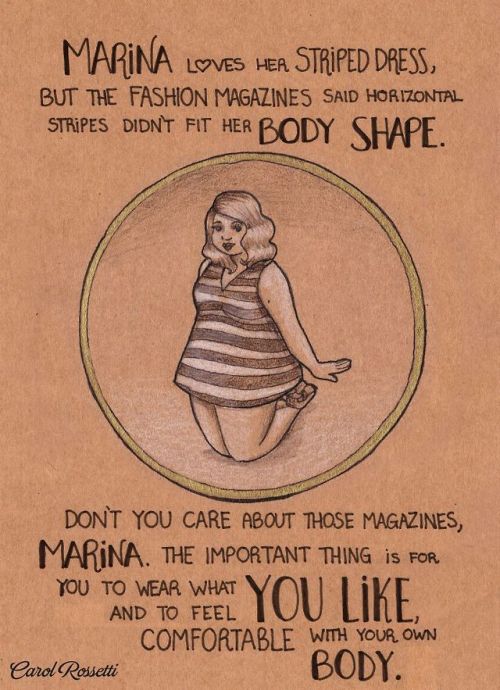

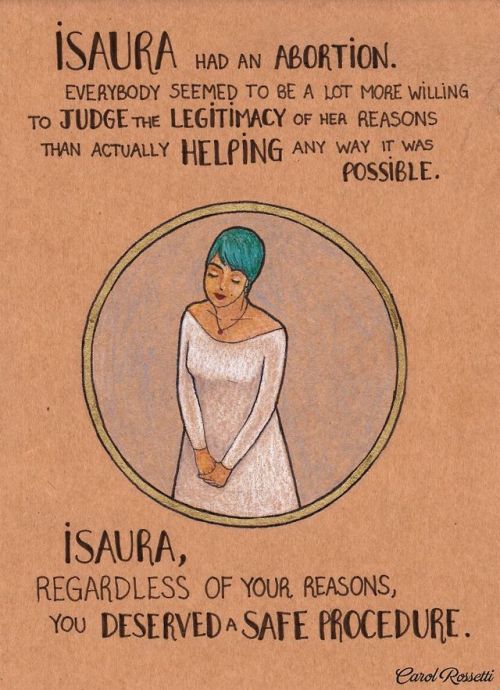

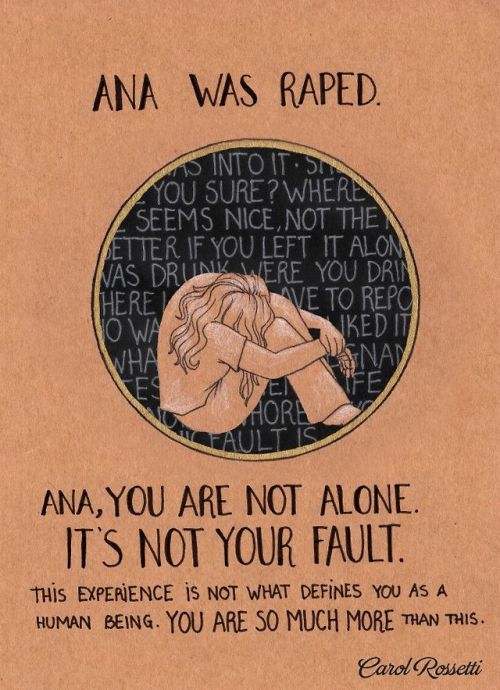

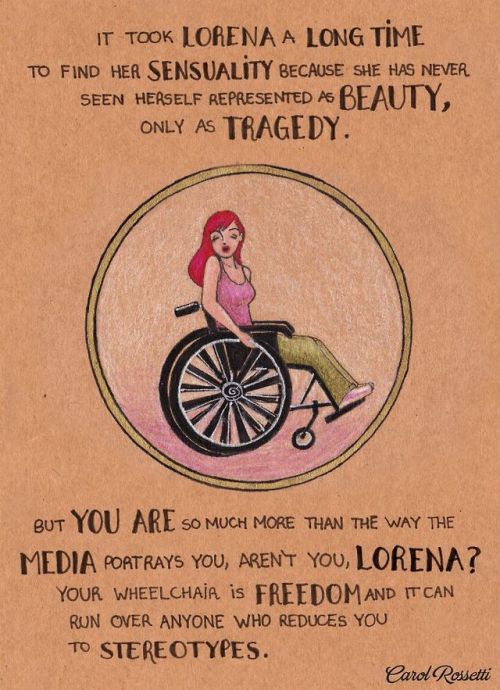
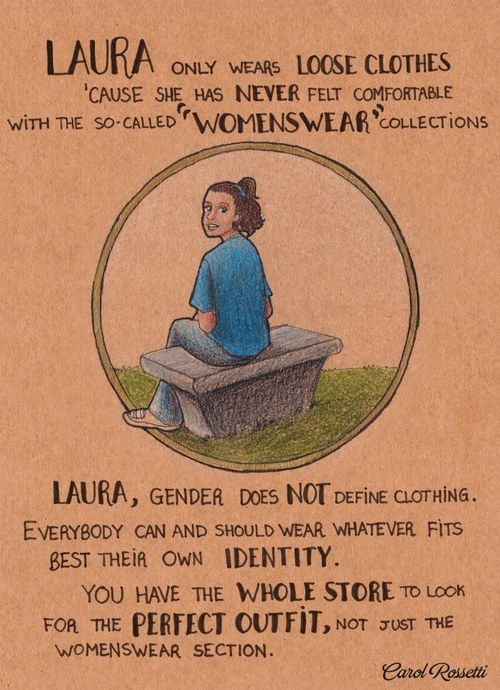
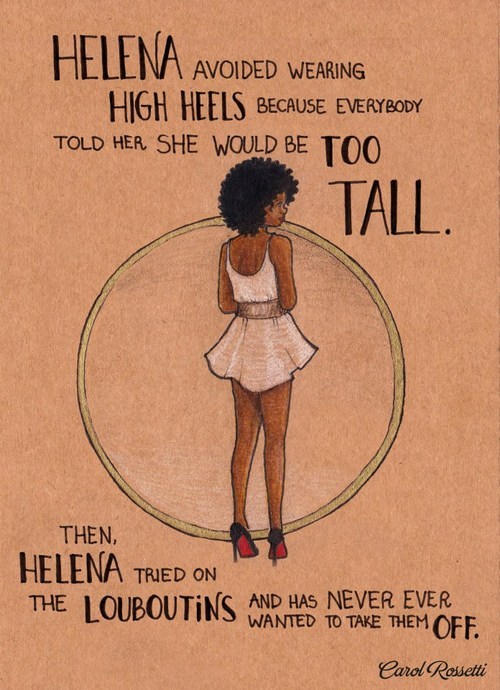


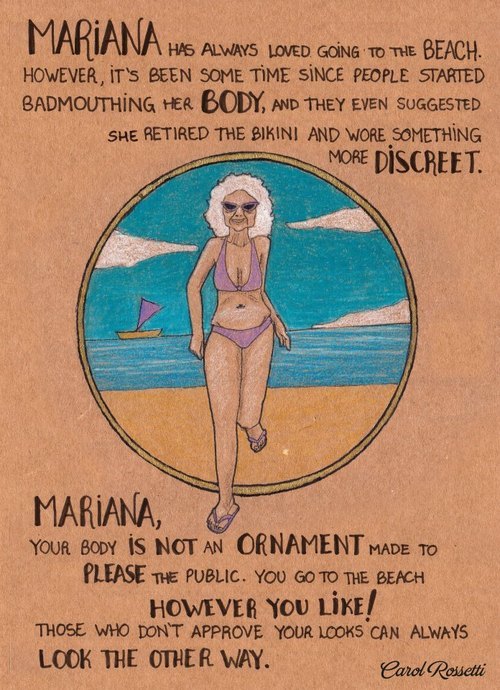
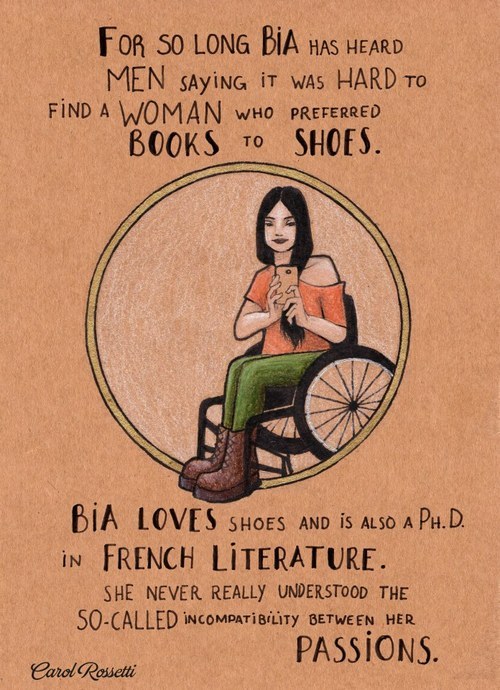


Source
“Image Credit: Carol Rossetti
When Brazilian graphic designer Carol Rossetti began posting colorful illustrations of women and their stories to Facebook, she had no idea how popular they would become.
Thousands of shares throughout the world later, the appeal of Rosetti’s work is clear. Much like the street art phenomenon Stop Telling Women To Smile, Rossetti’s empowering images are the kind you want to post on every street corner, as both a reminder and affirmation of women’s bodily autonomy.
“It has always bothered me, the world’s attempts to control women’s bodies, behavior and identities,” Rossetti told Mic via email. “It’s a kind of oppression so deeply entangled in our culture that most people don’t even see it’s there, and how cruel it can be.”
Rossetti’s illustrations touch upon an impressive range of intersectional topics, including LGBTQ identity, body image, ageism, racism, sexism and ableism. Some characters are based on the experiences of friends or her own life, while others draw inspiration from the stories many women have shared across the Internet.
“I see those situations I portray every day,” she wrote. “I lived some of them myself.”
Despite quickly garnering thousands of enthusiastic comments and shares on Facebook, the project started as something personal — so personal, in fact, that Rossetti is still figuring out what to call it. For now, the images reside in albums simply titled “WOMEN in english!“ or ”Mujeres en español!“ which is fitting: Rossetti’s illustrations encompass a vast set of experiences that together create a powerful picture of both women’s identity and oppression.
One of the most interesting aspects of the project is the way it has struck such a global chord. Rossetti originally wrote the text of the illustrations in Portuguese, and then worked with an Australian woman to translate them to English. A group of Israeli feminists also took it upon themselves to create versions of the illustrations in Hebrew. Now, more people have reached out to Rossetti through Facebook and offered to translate her work into even more languages. Next on the docket? Spanish, Russian, German and Lithuanian.
It’s an inspiring show of global solidarity, but the message of Rossetti’s art is clear in any language. Above all, her images celebrate being true to oneself, respecting others and questioning what society tells us is acceptable or beautiful.
“I can’t change the world by myself,” Rossetti said. “But I’d love to know that my work made people review their privileges and be more open to understanding and respecting one another.””
From the site: All images courtesy Carol Rossetti and used with permission. You can find more illustrations, as well as more languages, on her Facebook page.

Clutter of Cats Drinking Glass // CatCoven
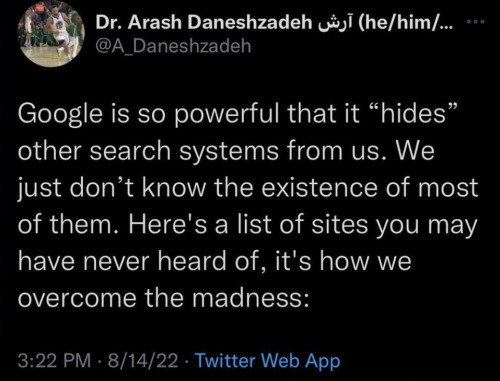
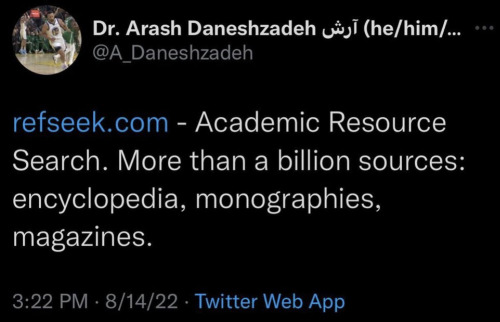
refseek.com
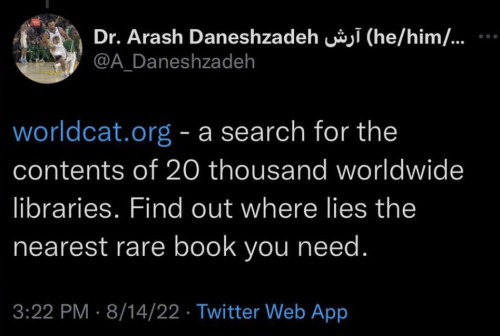
www.worldcat.org/

link.springer.com
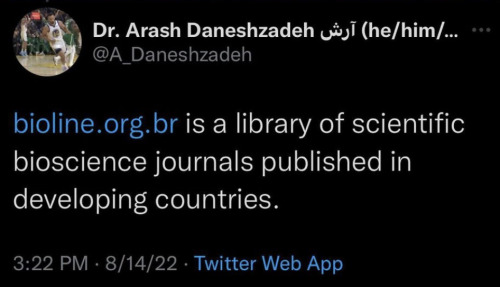
http://bioline.org.br/
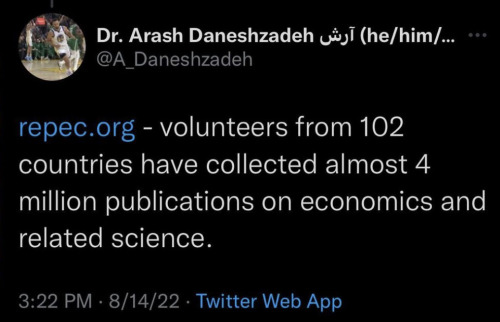
repec.org

science.gov

pdfdrive.com


CatPaw Keycap - MX Compatible. Handmade Resin by CuratedKeys
books with nonbinary and/or "they/them" characters
this is mostly directed at @the-closet-case but i hope it can help other people too!
books with they/them narrators
- "I Wish You All The Best", Mason Deaver
- "River Of Teeth", Sarah Gailey (there's multiple narrators in this one, one of them uses they/them)
- "Can't Take That Away", Steven Salvatore (main character switches between he/she/they.)
- "No Man of Woman Born", Ana Mardoll. (This one is a short story collection which includes a he/she/they genderfluid person, a xe/xem person, and multiple other trans folks. also, an aro character and a bi one!)
books with major characters who use they/them, exclusively or not
- "Spellhacker", MK England (the love interest is nonbinary and uses they/them)
- "The Heartbreak Bakery", A.R. Capetta (the love interest uses he/they pronouns; the narrator uses no pronouns.)
- Also, bonus: not as major but "A Dark and Hollow Star" by Ashley Shuttleworth has a genderfluid side character who uses they/them.
books with nonbinary characters that don't use they/them
- "Meet Cute Diary", Emery Lee. The love interest uses ey/em pronouns (or maybe e/em, i can't quite remember)
- "Good Omens", Neil Gaiman & Terry Pratchett. Crowley and Aziriphale both use he/him but are referred to as having no gender.
~
I'll add more later, I'm really tired right now and am having difficulty recalling books to add.
Gonna start a post with blank memes. Please add any you have on hand and reblog to spread them.








GREAT BRITAIN & WEST EUROPEAN RESOURCES
The Anthropological Masterlist is HERE.
Great Britain is a European island in the North Atlantic Ocean. It is the largest island in the world.
ARTHURIAN ─ “The Matter of Britain, or the Arthurian cycle, is a medieval European body of literature.” ─ Arthurian Information ─ Arthurian Sources ─ Arthurian Texts
CORNWALL ─ “The Cornish people are a Western European people. They are native to Cornwall.” ─ Cornwall’s Stones ─ Cornish History ─ Cornish Dictionary
ENGLAND ─ “The English people are a Germanic people. They are native to England.” ─ Middle English Literature ─ English Folklore ─ The English Renaissance
ICENI ─ “The Iceni, or Ecini, were a Brittonic people that lived from the British Iron Age to the early Roman era. They lived in modern-day Norfolk.” ─ Iceni Information
IRELAND ─ “The Irish people are a Western European people that share the Irish culture. They are native to Ireland.” ─ Irish Folklore & Mythology ─ Irish History ─ Irish Language
MANX ─ “The Manx people are a West European people that share the Manx culture. They are native to the Isle of Man.” ─ Manx Information ─ Manx History ─ Manx Language
ORKNEY ─ “Orkney, or the Orkney Islands, is a European archipelago. It is located in Scotland.” ─ Orcadian Information ─ Orcadian Culture & History
SCOTLAND ─ “The Scottish, or Scotch, people are a European people. They are native to Scotland.” ─ Scottish Folklore ─ Scottish History ─ Scots Language
WALES ─ “Welsh people are a Western European people that share the Welsh culture. They are native to Wales.” ─ Welsh Culture ─ Welsh History ─ The Four Branches of the Mabinogi
Western Europe is a European region that constitutes the western part of the European continent. Great Britain is also considered part of Western Europe.
BELGIUM ─ “The Belgian people are a Western European people that share the Belgian culture. They are native to Belgium.” ─ Belgian History ─ Belgian Timeline
DUTCH ─ “The Dutch people are a West Germanic people. They are native to the Netherlands.” ─ Dutch Literature (in Dutch) ─ Dutch Folklore ─ Dutch History
FRANCE ─ “The French people are a Western European people that share the French culture. They are native to France.” ─ French Culture ─ French History ─ French Dictionary
FRANKS ─ “The Franks were a Germanic people. They lived between the Lower Rhine and Ems River.” ─ Frankish Information ─ Frankish Information ─ Rise of the Franks
GERMANIC NEOPAGANISM ─ “Germanic Neopaganism, or Heathenry, is a Pagan religion. It originated in Europe in the early 20th century C.E.” ─ Germanic Neopagan Information (in German)
*MEDIEVAL EUROPEAN ─ “The Middle Ages, or the Medieval Period, was a European period of time from the 5th century C.E. to the 15th century C.E.” ─ Medieval Culture ─ Pliny’s History of the World ─ Medieval Military History
NORSE ─ “The Nordic, or North Germanic, people are a Germanic people. They are native to the Nordic region of Europe.” ─ Vikings of Denmark ─ Norse Mythology ─ The Edda
SWEDEN ─ “The Swedish, or Swede, people are a Germanic people. They are native to Sweden.” ─ Swedish Culture ─ Swedish History ─ Swedish Dictionary
* - The Medieval European period was not just a Western European period of time. It was also part of many other European histories.










Handmade light up signs by sawandsteel on Etsy
• So Super Awesome is also on Facebook, Twitter and Pinterest •

Dog Cookie Cutter and Stamp Set by ChikoCraft
-
 wolfkat reblogged this · 2 months ago
wolfkat reblogged this · 2 months ago -
 lime2342 reblogged this · 4 months ago
lime2342 reblogged this · 4 months ago -
 tinyparticlesofdoom liked this · 6 months ago
tinyparticlesofdoom liked this · 6 months ago -
 snicklefrit reblogged this · 1 year ago
snicklefrit reblogged this · 1 year ago -
 sampaisleyriot liked this · 1 year ago
sampaisleyriot liked this · 1 year ago -
 jahoolopy reblogged this · 1 year ago
jahoolopy reblogged this · 1 year ago -
 jahoolopy liked this · 1 year ago
jahoolopy liked this · 1 year ago -
 gruvu liked this · 1 year ago
gruvu liked this · 1 year ago -
 shippudens liked this · 1 year ago
shippudens liked this · 1 year ago -
 circus-bearie liked this · 1 year ago
circus-bearie liked this · 1 year ago -
 wukongfeetpics reblogged this · 1 year ago
wukongfeetpics reblogged this · 1 year ago -
 wukongfeetpics liked this · 1 year ago
wukongfeetpics liked this · 1 year ago -
 hdawg1995 reblogged this · 1 year ago
hdawg1995 reblogged this · 1 year ago -
 binary-warrior liked this · 1 year ago
binary-warrior liked this · 1 year ago -
 bit3dvds liked this · 2 years ago
bit3dvds liked this · 2 years ago -
 sandstormstormy liked this · 2 years ago
sandstormstormy liked this · 2 years ago -
 galbee liked this · 2 years ago
galbee liked this · 2 years ago -
 foxerlies liked this · 2 years ago
foxerlies liked this · 2 years ago -
 istuilu liked this · 2 years ago
istuilu liked this · 2 years ago -
 sashagrotter liked this · 2 years ago
sashagrotter liked this · 2 years ago -
 atticofthings reblogged this · 2 years ago
atticofthings reblogged this · 2 years ago -
 sharkbyt3drawsstuff reblogged this · 2 years ago
sharkbyt3drawsstuff reblogged this · 2 years ago -
 sharkbyt3drawsstuff liked this · 2 years ago
sharkbyt3drawsstuff liked this · 2 years ago -
 whitetiger94things reblogged this · 2 years ago
whitetiger94things reblogged this · 2 years ago -
 perseaweedus reblogged this · 2 years ago
perseaweedus reblogged this · 2 years ago -
 pajaritocantando liked this · 2 years ago
pajaritocantando liked this · 2 years ago -
 movedd liked this · 2 years ago
movedd liked this · 2 years ago -
 learned-something-new-today reblogged this · 2 years ago
learned-something-new-today reblogged this · 2 years ago -
 sunflower-spinosaurus liked this · 2 years ago
sunflower-spinosaurus liked this · 2 years ago -
 fall-out-barakat reblogged this · 2 years ago
fall-out-barakat reblogged this · 2 years ago -
 lhinelle reblogged this · 2 years ago
lhinelle reblogged this · 2 years ago -
 lhinelle liked this · 2 years ago
lhinelle liked this · 2 years ago -
 ohboywonder reblogged this · 2 years ago
ohboywonder reblogged this · 2 years ago -
 aliesdaliance reblogged this · 2 years ago
aliesdaliance reblogged this · 2 years ago -
 loquacious487 liked this · 2 years ago
loquacious487 liked this · 2 years ago -
 versevikki liked this · 2 years ago
versevikki liked this · 2 years ago -
 elosohombre liked this · 2 years ago
elosohombre liked this · 2 years ago -
 lopsidedsoftie liked this · 2 years ago
lopsidedsoftie liked this · 2 years ago -
 hellslittlemunckin liked this · 2 years ago
hellslittlemunckin liked this · 2 years ago -
 butchfemmebatcat liked this · 2 years ago
butchfemmebatcat liked this · 2 years ago -
 lang-vers003 liked this · 2 years ago
lang-vers003 liked this · 2 years ago -
 popcornteabandannadog liked this · 2 years ago
popcornteabandannadog liked this · 2 years ago -
 straymongrel liked this · 2 years ago
straymongrel liked this · 2 years ago -
 jiji-sasa liked this · 2 years ago
jiji-sasa liked this · 2 years ago -
 morethanmeetstherye liked this · 2 years ago
morethanmeetstherye liked this · 2 years ago
299 posts